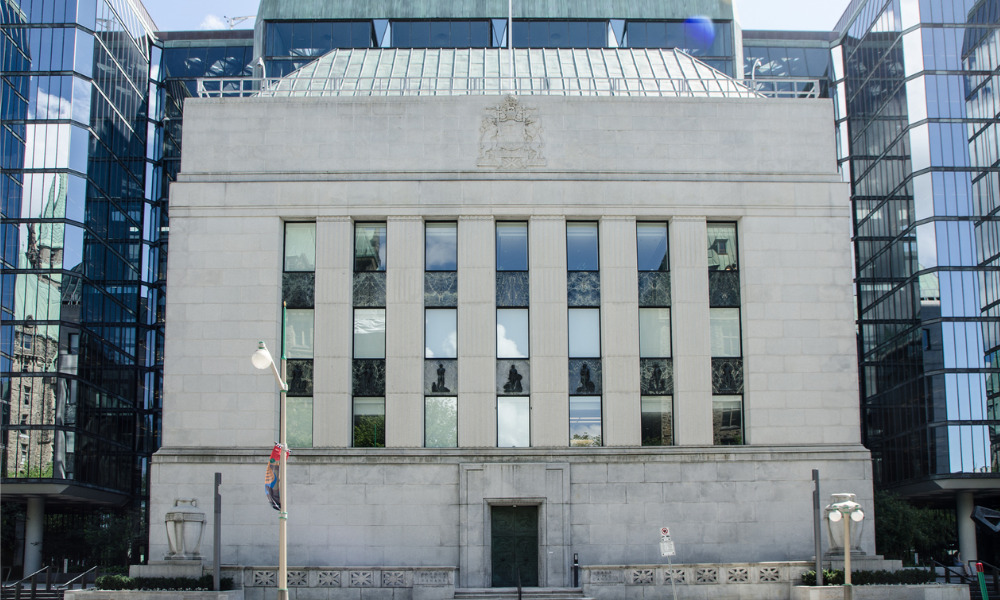The central bank will be moving into a new phase following the end of its QE program

The Bank of Canada has announced that its target for the overnight rate will remain at the effective lower bound of 0.25%, with the bank rate at 0.5% and the deposit rate at 0.25%.
However, while the central bank will maintain its “extraordinary forward guidance” on the path for the overnight rate, the institution will be ending its quantitative easing (QE) program and moving into the reinvestment phase. During this phase, the BoC will be purchasing Government of Canada bonds “solely to replace maturing bonds,” it said.
“The global economic recovery from the COVID-19 pandemic is progressing. Vaccines are proving highly effective against the virus, although their availability and distribution globally remain uneven and COVID variants pose risks to health and economic activity,” the BoC said.
“In the face of strong global demand for goods, pandemic-related disruptions to production and transportation are constraining growth.”
The Bank also announced a slight revision of its forecast for the timescale on hiking rates, projecting that its inflation target would be sustainably achieved by sometime in the middle quarters of 2022. In its previous statement at the beginning of September, the Bank had said it expected interest rates to begin rising in the second half of next year.
National inflation reached an 18-year high of 4.4% in September, according to Statistics Canada. This marked the sixth straight month that the rate exceeded the BoC’s policy target of 1% to 3%.
“The recent increase in [consumer price index] inflation was anticipated in July, but the main forces pushing up prices – higher energy prices and pandemic-related supply bottlenecks – now appear to be stronger and more persistent than expected,” the Bank said.
“Core measures of inflation have also risen, but by less than the CPI. The bank now expects CPI inflation to be elevated into next year, and ease back to around the 2% by late 2022.”
Read more: Rate hike fears driving Canadians to scale down spending – MNP Debt
The central bank added that inflation rates had increased in many countries, boosted by those supply bottlenecks and higher energy prices. “While bond yields have risen in recent weeks, financial conditions remain accommodative and continue to support economic activity,” it said.
The Bank said that it is expecting global GDP to grow by 6.5% this year, 4.25% in 2022, and around 3.5% in 2023. The Canadian economic restart will likely push the national GDP up by 5% this year, before moderating to 4.25% in 2022 and 3.75% in 2023.
“Demand is expected to be supported by strong consumption and business investment, and a rebound in exports as the US economy continues to recover,” the BoC said. “Housing activity has moderated, but is expected to remain elevated.”
Still, the economy will continue to require “considerable” monetary policy support, the central bank said. “We remain committed to holding the policy interest rate at the effective lower bound until economic slack is absorbed so that the 2% inflation target is sustainably achieved,” it noted.
“In light of the progress made in the economic recovery, the governing council has decided to end quantitative easing and keep its overall holdings of Government of Canada bonds roughly constant.”
The central bank will be making its next overnight rate target announcement on December 08.



